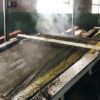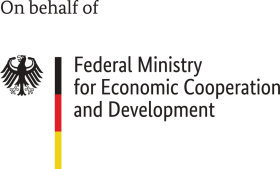Using the sun’s rays to refrigerate food

Electricity from solar plants and cooling technology are an ideal mix to help industries develop. For example, even in remote regions, this combination can even be used to support agricultural products. In this interview, Thomas Bundi from Strathmore University explains the technology and talks about the workshop he was instrumental in developing. In these trainings, participants learn, over three days, how to design and build their own customised refrigeration technology for various productive applications.
How does solar-powered cooling technology work for commercial purposes?
It’s the same principle as a refrigerator. You need electricity to run the technology that generates cold. In our case, this is done by DC compressors that we power with solar electricity. But it also works with AC compressors if they are operated via a suitable inverter. In our workshop we show the participants how to design, calculate and build the system. It is always the same principle: no matter whether you want to build a large refrigerator or a cold room at once, but there are different configurations depending on whether you use battery or ice storage. The right dimensioning method helps to find the most sustainable solution, both economically and ecologically.
How did the workshop come about?
At the beginning of 2019, we had the idea. Many are familiar with either cooling technology or solar applications. But many don’t know that the two can work so well together. Therefore, we wanted to bring this together. With the German University of Hohenheim and Green People’s Energy, we found great partners who supported us with technology and financial resources.
And then the pandemic came, didn’t it?
Yes, we then conducted our first training units initially online, with our demonstration pieces, which we built with technology from Hohenheim. We developed the curricula here in Strathmore in cooperation with the University of Hohenheim. From this, transcripts and Computer exercises were created according to our best standards. In addition, we had the opportunity to design an innovative solar-powered cold room and set it up in Nairobi, using mainly locally available materials. This is now used for training purposes together with several solar-powered refrigerators.
What was the intention of the workshop?
We teach professionals who are familiar with the subject matter how to design their own refrigeration projects and build it themselves within three days. On the first day they learn about refrigerators, cold rooms, ice machines and measuring methods. On the second, we deal with the theoretical basics, and then on the third day they design their first own project. We don’t forget to talk about aspects such as sustainability and economic efficiency, such as the use of natural refrigerants, and the role of DC compressors, battery technologies and ice storage.
How is the course received?
We have had very good feedback, both from our stakeholders and from the first three-day workshop with fifteen participants in February. The majority were alumni of our university, but also professionals from the refrigeration business who previously knew nothing about the great possibilities of solar technology for refrigeration systems. And there were also five colleagues from our neighbouring country, Somalia. The topic is innovative, multi-disciplinary, and very hot right now. Bringing together experts in the field of solar energy and cooling is a challenge, but it confirmed to us the importance of appropriate training for professionals who want to learn about solar cooling.
And they can all build their own cooling technology now?
Yes, the technology is mature and works reliably. The great thing is that you can run it anywhere the sun shines. When the sun is not shining, it is also cooler, and so electricity generation and electricity consumption balance each other out. You don’t need a power grid and you don’t need a single drop of diesel. So you can install cooling systems in remote regions and they work reliably. The hurdle for cooling technology to be taken for granted even in the remote rural regions of Africa is that many more people must learn about the technology in the first place and learn to use it. It is not only the dimensioning of the systems that is important, but also the way in which these systems are assembled locally. This has to do with the fact that the cooling needs of end users can be very different. The good news is that very similar components can be used to build not only cold rooms but also ice machines, refrigerators and milk cooling systems on site.
But the technology also costs money, doesn’t it?
Sure. But even that is no longer a hurdle, because solar systems are now very cheap and effective. If farmers get together and want to cool 500 kilogrammes of potatoes at four degrees in 20 cubic metres, for example, they pay about 6,500 euros for the cold storage room. Within a year, the system pays for itself, then it belongs to them and the operation is almost free. The right business model that can generate an income is important. But not only that. Financing models like the so-called CaaS (cooling as a service) will play an important role for the spread of the technology in the future.
This is great and seems to promise a very big potential for agriculture in rural Africa.
Yes, and that is why we are so happy to be part of the community that is bringing renewable energy forward here on the ground to kick-start development. It’s very efficient and sustainable because we also make sure to spread environmentally friendly technology; solar of course, but also using natural refrigerants, not using electric batteries and using renewable insulation materials. The last point even makes it possible to bring climate-neutral cooling solutions to the market. That is very motivating.
When will the next workshops take place?
We have two more workshops planned for this year. If you are interested, just write to me at tbundi@strathmore.edu.
Thomas Bundi is a quality engineer and tests solar devices, lamps and batteries at Strathmore University in Nairobi. He is also the team leader of the training centre for solar-powered pumps and cooling systems and trains future technicians in solar technology so that they can pass their certificate exams.
The curriculum of the training course on small-scale solar cooling and further information are available here on Energypedia.





